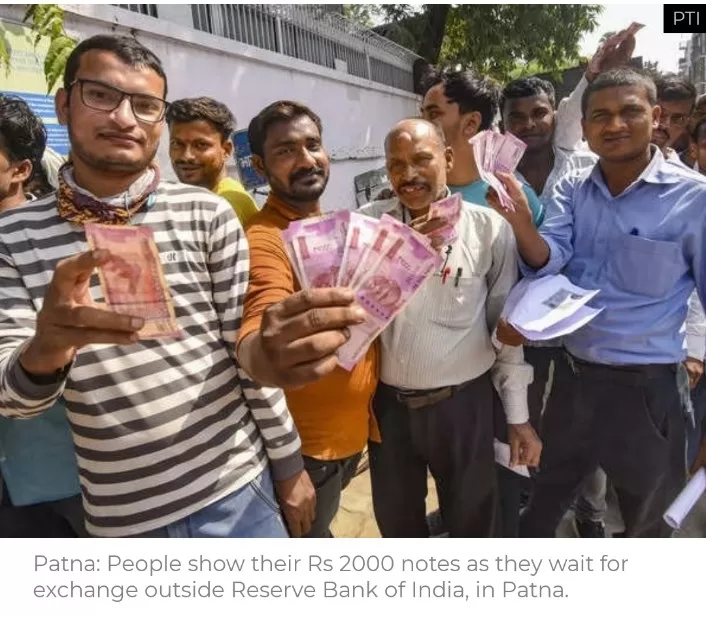In a surprising turn of events, a surge of individuals is converging upon 19 Reserve Bank of India (RBI) branches to exchange the discontinued Rs 2,000 denomination notes. The RBI’s decision to phase out the Rs 2,000 note, introduced in 2016 following the demonetization of Rs 500 and Rs 1,000 notes, has led to this scenario.
As of May 19, the RBI initiated the process of discontinuing the Rs 2,000 note, in line with Prime Minister Narendra Modi’s move to invalidate 88 percent of the currency in circulation, primarily the Rs 500 and Rs 1,000 notes.
Initially, the public and entities holding these notes were advised to exchange or deposit them in bank accounts by September 30, with the deadline subsequently extended to October 7.
From October 7, both deposit and exchange services were terminated at regular bank branches. Starting October 8, individuals have been granted the option of either exchanging these notes or having the equivalent amount credited to their bank accounts at any of the 19 RBI locations.
RBI Governor Shaktikanta Das recently revealed that approximately Rs 3.43 lakh crore worth of Rs 2,000 notes have been returned, with about Rs 12,000 crore of these notes still in circulation.
Amidst these developments, people across the country are queuing up at RBI offices, including in the capital, to swap their Rs 2,000 notes. Individuals and entities can exchange Rs 2,000 banknotes at the 19 RBI offices, with a maximum limit of Rs 20,000 per transaction. There is no ceiling on the total amount that can be credited to bank accounts with Rs 2,000 notes.
The RBI had introduced the Rs 2,000 notes in the aftermath of the demonetization of Rs 500 and Rs 1,000 notes in November 2016, along with new Rs 500 notes, to expedite the process of remonetization.




